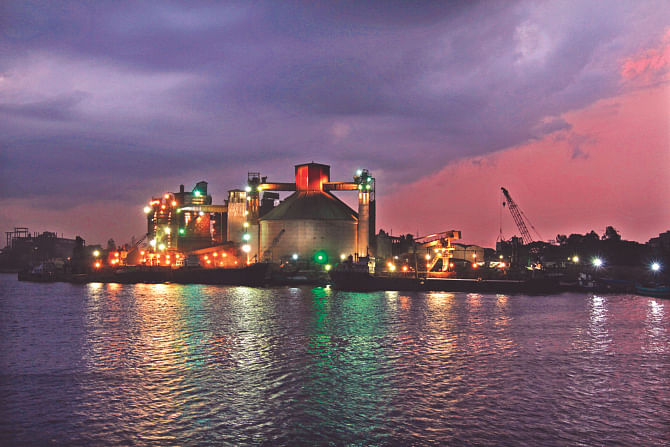Cementing the development revolution

The amo-unt of cement consumed by a country is an important indicator for identifying its economic progress. Bangladesh, by that matter is no exception. The cement industry of Bangladesh has witnessed significant growth in the past two decades. As of today, the industry comprises of 95% Grinding Projects and 5% Integrated Projects. The demand of Cement (Approximately 20 million MT) is still lower than the industry capacity of 33.2 million MT. Although, we are yet to utilize the full capacity of the industry, it is a sign that Bangladesh is ready to receive the wave of much anticipated development in terms of public infrastructure, communication and housing facilities. According to The Global Cement Directory (2014), the Chinese cement industry consists of 802 integrated cement plants with a combined production capacity of 1.34Bnt/yr. It is a burning example of what is in store for cement brands operating in countries with a genuine developmental focus. Bangladesh fits the descriptions just right. So, in a way, the cement industry of Bangladesh is headed for a revolution.
Abundance of minerals does not grantee a country's development. Countries like Indonesia, Russia and many African countries are rich in resources but have not reached the peak of development as expected. In contrast, Japan, Korea and Singapore are some countries possessing relatively less mineral resources but have achieved a higher rate of economic development by focusing on technological innovation by utilizing human resources. Likewise, human resources are a key resource for Bangladesh. The Country's cement sector employs over one lac people, both directly and indirectly, who possess the capability of presenting Bangladeshi cement in the international market in a competitive manner.
China, Saudi Arabia, Singapore and few other developed countries are hovering around per capita cement consumption between 1000 Kg to 1700 kg per year, with certain outliers like Qatar-3023 Kg (2012). The relationship between GDP and cement consumption, plotted by multiple sources and years, shows a general inclination towards cement consumption of 600kg per capita or less in nations with per capita GDPs in excess of US$25,000. In recent studies, the per capita cement consumption of Bangladesh was found to be 107Kg, which is behind India (210 Kg), Pakistan (265Kg), Sri Lanka (310 Kg) and Korea (570 Kg). High density of people in cites, unplanned urbanization and rapid economic development are likely to expand cites vertically rather than horizontally to achieve maximum utilization of available space and to ensure future food security by not urbanizing fertile land. To achieve this there is no alternative to cement. A tunnel from Bir Shrestha Shaheed Jahangir Gate to Agargaon Rokeya Sarani is a promising future project, indicating the city's vertical expansion, in this case vertically down. The proposed Dhaka- Ashulia Elevated Expressway is another example of vertical expansion apart from the many flyovers, which have already been completed.

The tropical climate of Bangladesh is unfriendly for traditional asphalt roads. Asphalt roads here get damaged by corrosion from water and flood every year and cause communication difficulty, fatal road accidents and unprecedented repair cost. With around 40% increase in construction cost, it is possible to use RCC to construct roads and increase its durability by a minimum of 20 years which, at the same time, reduces the real cost of construction by 19% over the same span of time. Climate of Thailand is similar to Bangladesh and nearly 80% of roads there are built with RCC and RCC is increasingly used in India, Malaysia and some African countries. RCC can be used to construct blocks or walls to protect riverbanks; currently weaker and less durable CC blocks are used for this purpose in Bangladesh.
Before 1995, Bangladesh imported cement and started exporting it in 2003. The brand that pioneered export was none other than Bangladesh's own, Crown Cement. Till date, Crown Cement competes internationally to maintain 45% of the cement export market of Bangladesh and significantly contribute to country's economy by earning foreign currency. By taking a Bangladeshi product beyond borders, Crown Cement is the only brand to be awarded Export Gold Trophy twice in a row (2008-2009 & 2009-2010) from the Honorable Prime Minister of Bangladesh.
As mentioned earlier, cement consumption symbolizes development and economic growth. Just like Crown Cement, brands like Seven Circle, Premier Cement and other growing cement brands in Bangladesh are likely to compete in the aggressive international market by ensuring top quality and standards. Only then can we truly attain development of the country and its people.
The writer is the Vice President, Bangladesh Cement Manufacturer's Association (BCMA).

 For all latest news, follow The Daily Star's Google News channel.
For all latest news, follow The Daily Star's Google News channel. 



Comments